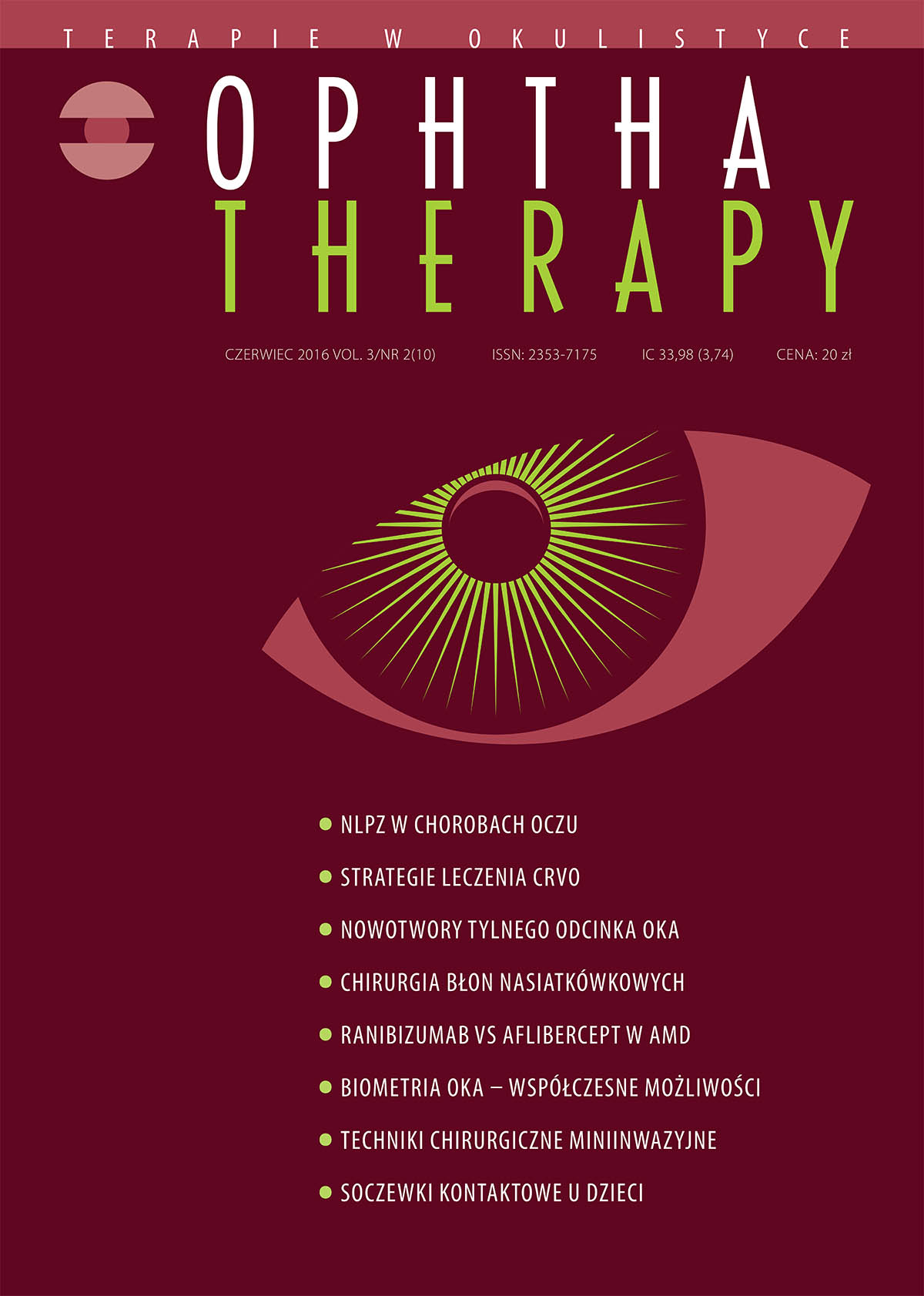Impact of lens care products on ocular surface in contact lens wearer
Main Article Content
Abstract
According to the literature one of the main causes of microbial keratitis associated with contact lenses is inappropriate lens care. It is proven that some pairs of contact lens–lens care systems exhibit higher biocompatibility then other pairs. Ideal lens care system should remove all deposits from lens surface, and prevent bacterial colonization. The aim of this work is to discuss the biocompatibility, its clinical implications and impact on contact lens comfort.
Downloads
Article Details

This work is licensed under a Creative Commons Attribution-NonCommercial-NoDerivatives 4.0 International License.
Copyright: © Medical Education sp. z o.o. License allowing third parties to copy and redistribute the material in any medium or format and to remix, transform, and build upon the material, provided the original work is properly cited and states its license.
Address reprint requests to: Medical Education, Marcin Kuźma (marcin.kuzma@mededu.pl)
References
2. Lorentz H, Jones L. Lipid deposition on hydrogel contact lenses: how history can help us today. Optom Vis Sci. 2007; 84(4): 286-95.
3. Jones L, Mann A, Evans K et al. An in vivo comparison of the kinetics of protein and lipid deposition on group II and group IV frequent-replacement contact lenses. Optom Vis Sci. 2000; 77(10): 503-10.
4. Carney FP, Nash WL, Sentell KB. The adsorption of major tear film lipids in vitro to various silicone hydrogels over time. Invest Ophthalmol Vis Sci. 2008; 49(1): 120-4.
5. Thai LC, Tomlinson A, Doane MG. Effect of contact lens materials on tear physiology. Optom Vis Sci. 2004; 81(3): 194-204.
6. Butrus SI, Klotz SA. Contact lens surface deposits increase the adhesion of Pseudomonas aeruginosa. Curr Eye Res. 1990; 9(8): 717-24.
7. Wu YT, Willcox M, Zhu H et al. Contact lens hygiene compliance and lens case contamination: A review. Cont Lens Anterior Eye. 2015; 38(5): 307-16.
8. Cheng KH, Leung SL, Hoekman HW et al. Incidence of contact-lens-associated microbial keratitis and its related morbidity. Lancet. 1999; 354(9174): 181-5.
9. Stapleton F., Naduvilath T, Keay LJ et al. Risk Factors for Microbial Keratitis in Daily Disposable Contact Lens Wear. Invest Ophthalmol Vis Sci. 2010; 51(13): 1305.
10. Liesegang TJ. Contact lens-related microbial keratitis. Part I: Epidemiology. Cornea. 1997; 16(2): 125-31.
11. Dart JK, Stapleton F, Minassian D. Contact lenses and other risk factors in microbial keratitis. Lancet. 1991; 338(8768): 650-3.
12. Edwards K, Keay L, Naduvilath T et al. Characteristics of and risk factors for contact lens-related microbial keratitis in a tertiary referral hospital. Eye (Lond). 2009; 23(1): 153-60.
13. Morgan PB, Efron N, Brennan NA et al. Risk factors for the development of corneal infiltrative events associated with contact lens wear. Invest Ophthalmol Vis Sci. 2005; 46(9): 3136-43.
14. Sankaridurg PR, Sweeney DF, Sharma S et al. Adverse events with extended wear of disposable hydrogels: results for the first 13 months of lens wear. Ophthalmology. 1999; 106(9): 1671-80.
15. Kropacz S. Ocena skuteczności dezynfekcji płynów do pielęgnacji soczewek kontaktowych. Optyka. 2012; 5(2012): 52-5.
16. Bloomenstein MR, Gaddie IB, Karpecki P et al. Understanding Biocompatibility: The Importance of Study Design, Methods, and Proper Interpretation. Cornea. 2012; 31(12): 1507.
17. Korb DR, Herman JP, Finnemore VM et al. An evaluation of the efficacy of fluorescein, rose bengal, lissamine green, and a new dye mixture for ocular surface staining. Eye Contact Lens. 2008; 34(1): 61-4.
18. Zhao Z, Carnt NA, Aliwarga Y et al. Care regimen and lens material influence on silicone hydrogel contact lens deposition. Optom Vis Sci. 2009; 86(3): 251-9.
19. Andrasko G, Ryen K. Corneal staining and comfort observed with traditional and silicone hydrogel lenses and multipurpose solution combinations. Optometry. 2008; 79(8): 444-54.
20. Willcox MD, Phillips B, Ozkan J et al. Interactions of lens care with silicone hydrogel lenses and effect on comfort. Optom Vis Sci. 2010; 87(11): 839-46.
21. Keir N, Woods CA, Dumbleton K et al. Clinical performance of different care systems with silicone hydrogel contact lenses. Contact Lens and Anterior Eye. 2010; 33(4): 189-95.
22. Nichols JJ. Deposition rates and lens care influence on galyfilcon A silicone hydrogel lenses. Optom Vis Sci. 2006; 83(10): 751-7.
23. Andrasko G. Staining Grid. Online: http://www.staininggrid.com. (Access: 11.05.2016) .

